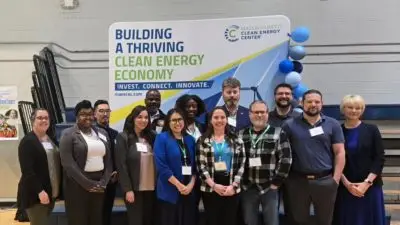Today, 75% of American homes have cooling systems and the United States is the country that uses the most energy for cooling in comparison with other countries around the world. Controlling indoor air temperature year-round has developed into a such an importance that about 48% of all energy consumption in American homes is from heating and cooling. So where did this all begin? Let’s take a look back and see where it all started.
1840s
Dr. John Gorrie stated that cooling was the answer to keeping his sick patients more comfortable and the key to avoiding diseases like malaria. His original system for cooling hospital rooms involved ice being shipped to Florida from frozen bodies of water in the North. He called his invention an “Ice Machine.”
1851
As an answer to Gorrie’s logistical challenges, he created a machine that created ice, powered by a horse, water, and wind-driven sails or steam. He was granted a patent, but it never made it to market. Some say his invention laid the ground for modern cooling.
1881
When President Garfield was shot in July, a cooling unit was created to keep him comfortable. It involved filling a device with wet cloths, a blowing fan, and a lot of ice- 500,000 pounds of ice in 2 months, to be exact.
1902
A printing company in New York, Sackett-Wilhelms Lithographic and Publishing Company, was having issues with humidity that was causing magazine pages to wrinkle, pages to swell, and ink to blur. Willis Carrier, an engineer, was given the task of creating a cooling system to decrease the humidity that affected the printed products. He produced cool air by utilizing an industrial fan to blow air over steam coils filled with cold water. The excess humidity would condense on the coils and give off cool air. It solved the printing problem and made people feel more comfortable. Carrier was granted a patent for his “Apparatus for Treating Air.”
1904
Organizers of the St. Louis World Fair used mechanical refrigeration to cool the Missouri State Building. This was the first time the American public experienced the comfort of cooling.
1906
Air conditioning was getting more and more press coverage and manufacturers (ex. leather and macaroni) were becoming aware of how changing the indoor temperature could affect their production. In the summer of 1906, a publication called Louisiana Planter and Sugar Manufacturer said “the hot summer days now prevailing make one wonder why ventilation with cool currents has not been thoroughly well exploited before these days.”
1906
Stuart Cramer, a textile mill engineer, is the first person known to call his cooling process “air conditioning.” He created a ventilation system that added water vapor to the air of textile plants so that the yarn would be easier to spin and less likely to break off.
1908
G.B. Wilson is the first person to use the term “air conditioning” in a book.
1914
An air conditioning unit was put in a mansion in Minnesota. It was about 7 feet high, 6 feet wide, and 20 feet long.
1920s
Americans were introduced to the comfort of cooling through the movies and movie theater cooling became widespread around the U.S. The first systems resulted in hot and muggy conditions on the upper levels and much colder temperatures at lower levels, where moviegoers were seen wrapping their feet with newspapers to warm themselves up.
1922
Carrier invented the centrifugal chiller to improve performance and reduce the cost of the current air conditioning model.
1922
Carrier installed his new version of cooling system at the Metropolitan Theater in Los Angeles. It resulted in better and more consistent comfort control on all levels.
1928
General Motors used chlorofluorocarbons (CFCs) to improve the safety of air conditioning. It was the world’s first non-flammable refrigerant but it was later linked to ozone damage and banned.
1929
Frigidaire introduced a new cooling system to the market that was small enough for use at home, although it was extremely heavy and expensive.
1930
General Electric improved on Frigidaire’s home model and produced 32 similar prototypes.
1932
H.H. Schultz and J.Q. Sherman filed a patent for a cooling system that could be placed on a window ledge. They hit the market but were very expensive and only enjoyed by the wealthy. The large system cost between $10,000 and $50,000, which would be equal to $120,000 to $600,000 today.
1939
Packard invented the first air-conditioned car. If it got too cold, the driver had to turn off the car, stop, open the hood, and disconnect the compressor belt. Dashboard controls came later.
1942
The U.S. created a “summer peaking” power plant to handle the growing electrical load from air conditioning.
1945
Life Magazine published a 4-page spread about air conditioning called “Air Conditioning / After the War it Will be Cheap Enough to Put in Private Homes.”
1947
Henry Galson developed a more compact and inexpensive version of the window air conditioner and by 1947, 43,000 units were sold and homeowners were officially enjoying air conditioning.
1953
In the post-World War II economic boom, more than 1 million units were sold this year alone.
Late 1960s
Most new homes had central air conditioning and window air conditioners were more affordable. Air conditioning was in about 100 million American homes or 87% of all households.
1970s
Central AC comes along and passes window units, using freon as the refrigerant. Freon was later linked to ozone depletion and was banned in several countries.
1970s
As the utilization of air conditioners increased, laws were passed to reduce energy consumption. This would set the stage for the Appliance and Equipment Standard’s Program, which established a single federal standard for AC manufacturers rather than state-by-state mandates.
1975
Oak Ridge National Laboratory developed the first version of a heat pump to create more energy-efficient and cost-effective ways of cooling.
1990
The Clean Air Act is amended to phase out CFCs and make air conditioning more environmentally friendly.
1991
Hydrofluorocarbons replaced CFCs and grow in popularity, causing less damage to the ozone.
1992
The U.S. Department of Energy (DOE) sets efficiency standards for the first time for residential air conditioners and heat pumps, which is estimated to save $29 billion in energy savings from 1992-2023.
1998
Advanced refrigerants are developed and Honeywell helps establish R-410a as the leading refrigerant to improve energy efficiency.
2006
The U.S. DOE sets new energy efficiency standards for manufacturers of air conditioners and heat pumps, which are expected to help avoid more than 369 million metric tons of carbon dioxide emissions.
2015
The U.S. DOE announces projects that will advance non-vapor compression technologies that don’t require refrigerants at all.
Air conditioning has come a long way but there are still things you can do today to save energy and money and cool your home in a way that’s best for the planet. Call HomeWorks Energy at (781) 305-3319 or go here for more information about air conditioning and energy efficiency. Ask about our no-cost Cooling Consultation and seasonal tune-ups!
Resources:
https://www.smithsonianmag.com/smithsonian-institution/unexpected-history-air-conditioner-180972108/
https://www.energy.gov/articles/history-air-conditioning
https://www.popularmechanics.com/home/a7951/history-of-air-conditioning/








